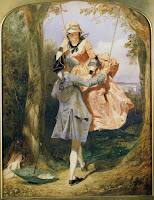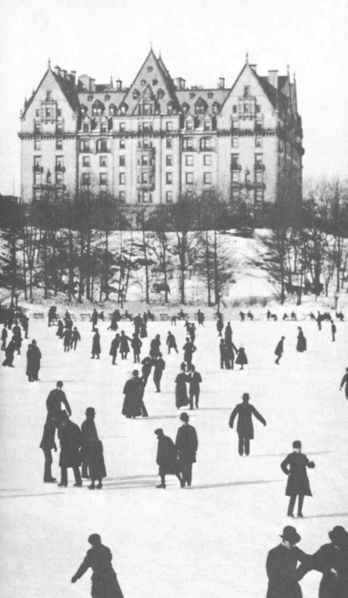>
Pass me a paper bag to breathe into, please!
Late last week, I sent off the first act of my French Revolution novel to a group of people who volunteered to be my guinea pigs. They’re my corporate focus group, if you will. Some of them I know and some of them I don’t. Even though it’s just a draft and only a third of the prospective novel (there are typically three acts in a novel, just like a play), it still has me quite nervous to know my baby is out there being judged by relative strangers! Every book I write becomes my baby simply because I devote so much of my love, time and energy raising it from an idea to a finished book, the way a mother raises a child from infancy to adulthood. Of course nobody enjoys hearing criticism about their child but there are times when a third party looking at the way you’re bringing up your child is necessary in order to discard harmful habits and inspire growth into something greater. It’s terrifying but needed. Authors, like mothers, have to set aside their own egos for the greater benefit of the child. So, my child it out there being poked and prodded by people who may totally hate it in the end.
This novel feels different than the first one. I don’t mean in terms of being more of a traditional romance or taking place in a different century though. I mean it feels different because it’s so deeply personal. I’m exposing one of my rawest nerves by putting it out there. This novel is loosely based on the lifetime I lived before Fanny Chamberlain. By loosely, I mean I have about five or six distinct memories from that time and I built the story around those five or six distinct memories in a manner of speaking by filling in the blanks various ways. Much of it is fictionalized but the core story is true. And very painful.
Why would I publish this story in a fictional novel? That’s a complicated question. There are times when previous lifetimes, especially for intuitive people, can become overbearing and difficult to overcome the more you ignore them. It’s kind of like dealing with a toddler. If you ignore the toddler, it will keep yanking on your clothes, crying, etc., until you give it proper attention. I have a long and bad habit of ignoring things that I need to deal with because there are always more pressing things that need to be done for other people. In this particular case, I have had a very difficult time coping with the things that were left unfulfilled – the things I was prevented from doing, the people I was prevented from being with, the life that was stolen from me, etc. I died a very angry, despondent person. When you die in such emotional and mental agony, it leaves a scar on your soul that goes with you into the next life and the next life and the next life until you resolve it. The next life was Fanny, who never really overcame the issues from the last life, and now, here I am, still trying to overcome the feeling that my life was stolen from me in 1793. That’s a skewed way to look at it because nobody dies before their predetermined time. Not being able to accept a death is a sign of lingering issues. The anger, despondency and resentment need to go bye bye.
Several years ago, my intuitive mentor (every intuitive needs a mentor) told me that confronting the accumulated bad energy head-on by writing it out and changing the end of the story might help me release it and leave it in my past. Taking control of it and pouring energy into the ending that I wanted takes away the power from the way my life ended. It’s taking my life back, so to speak. I thought it wasn’t going to help. I thought it was just going to make me relive things that I would rather forget. I didn’t do anything about it. Instead, I wrote my nonfiction book about my reincarnation case of Fanny Chamberlain and published it a few years ago. There was an unexpected side affect with that, though. By confronting everything that left a negative impact on me, I realized that I had let go of those things. One day about a year after it was published, I suddenly realized, “Wow, such-and-such hasn’t bothered me in a long time.” Fine, fine, fine. My mentor was right after all. Some things simply need to be confronted and plowed over with a Mack truck labeled TAKING BACK MY LIFE!
That brings me to why this book is fiction. I’m changing the ending and redirecting my energy from anger, despondency and resentment about the way my life ended to forgiveness and love. As I learned in going through the process with Unveiled, peeling back the layers of the soul leads to one undeniable truth. Anger has to lead to forgiveness and forgiveness has to lead to love. That is the point of life. If you don’t believe that now, it’s okay. Your soul is just not at the stage of development that can see it that way yet. Everybody is at a different stage of development and nobody knows the whole truth of the universe but that is the one central lesson in every lifetime I’ve explored – mine or other people’s lives.
Writing this novel has forced me to peel back some unpleasant and unexpected layers. I didn’t realize that I still harbor a lot of anger toward Georges and Edouard (their souls are around inhabiting different bodies now) even though the surface emotions look like unconditional love. If you don’t force yourself to look honestly at the way you feel about people, it will do more harm to you in the end. Don’t ignore truth even if it’s going to cause a lot of pain for the moment because things will be better after you acknowledge it. The process of forgiving and letting go can’t begin until you walk through the anger, despondency and resentment, and recognize them as valid emotions. You have to really dig and find out what you’re really angry at, not what you’re expected to be angry at. In this case, Georges and Edouard both promised to promised to protect me and they both failed at it. Neither of them were there at the end. It wasn’t their fault and it couldn’t be helped, which is why anger at them is not expected and may not even be fair. What’s expected and fair doesn’t make emotions any less valid though. Confronting real causes of anger allow people to understand them better and leave them behind.
This is just one example – one peeled back layer – of the importance of confronting things that cause you pain, whether they are in the past or the present. While this novel must be edited, written and marketed to flow as a concurrent story, there are big nuggets of my truth in it. I think the fact that it is filled with pieces of my life at that time makes it easier to accept criticism and suggestions from readers. I know the truth of what happened, so if shifting things here or there makes it easier for people to read, that’s fine, because it’s not going to change what already happened. It’s not going to change my process of healing either. There are really two processes happening here – one is to publish a novel that my readers will enjoy and maybe learn from, and the other is to confront what happened in order to leave it in my past for a brighter future.
Be kind to Celine. She’s fragile but she’s going to become a warrior.
Writing is my therapeutic measure to understand why I feel the way I do about certain things and it helps me release negative energy. It may not be the right release method for you, though. For some, creating music is the release. For others, it’s painting. Some even choose aggressive outlets like boxing or martial arts. Others are able to release it through meditation and yoga. There is no right or wrong way to release negative energy as long as you’re not causing yourself or anyone else further harm. One of the biggest lessons there is to learn about life besides forgiveness and love is to learn to trust your instincts. The little voice inside of you knows what is best.
My French Revolution novel is second in line for publication. I promised my readers that I would release the sequel to From the Darkness Risen first. You can see a list of my books at http://www.jessicajewettonline.com/books.html
Read More

















